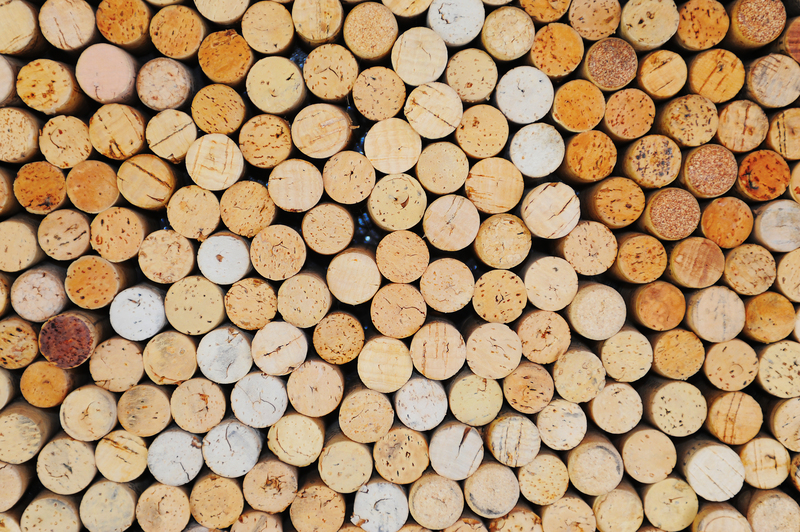Step-by-Step Process to Recycle Old Clothes: The Ultimate Guide to Sustainable Fashion
Have you ever wondered what happens to your clothing once you no longer wear it? With the fast fashion industry producing millions of garments each year, it's more important than ever to consider what to do with clothes you no longer need. Recycling old clothes is a sustainable solution that can significantly reduce textile waste and its environmental impact. In this guide, you'll discover the step-by-step process to recycle old clothes effectively and responsibly, empowering you to make a difference with every item you clear from your closet.
Why You Should Recycle Old Clothes
- Environmental Impact: Textile waste is one of the biggest contributors to landfill overcrowding and pollution.
- Conservation of Resources: Recycling garments conserves water, energy, and raw materials required for new textiles.
- Charitable Opportunities: Donated clothes can benefit those in need and support various missions.
- Promoting Circular Economy: Clothing recycling supports a system where products and materials are kept in use for as long as possible.
Understanding the benefits encourages more people to participate in textile recycling, paving the way for a cleaner, greener planet.

Step-by-Step Process to Recycle Old Clothes
Follow this comprehensive guide to ensure your old garments are properly recycled, donated, or repurposed--eliminating waste and supporting sustainable fashion.
1. Gather and Sort Your Old Clothes
The first step to recycle old clothes is to collect all the garments you no longer wear or need. Sorting is essential for efficient recycling:
- Separate by Condition: Create categories for gently used, heavily worn, and completely damaged clothing.
- Material Types: Group items by fabrics like cotton, polyester, wool, denim, and blends.
- Remove accessories such as buttons, zippers, and tags, as they may need to be processed differently.
Tip: Always check pockets and folds for valuables or personal belongings before proceeding!
2. Decide the Best Route for Each Pile
Not all clothing needs to be handled in the same way. After sorting old clothes, decide which recycling route or alternative each pile should take:
- Gently Used Items: Consider donating old clothes to local charities, shelters, or thrift shops.
- Worn or Damaged Textiles: These are ideal for recycling centers that specialize in textile recycling processes.
- Designer or Branded Garments: Research take-back or buy-back programs from certain retailers--many now offer rewards for returning used apparel.
- Upcycling Possibilities: Evaluate if any items can be creatively repurposed into household rags, bags, or crafts.
3. Clean Your Garments
Freshly washed clothing is more appealing for donation and easier to process for recycling:
- Machine-wash or hand-wash garments according to care instructions.
- Ensure clothes are thoroughly dried to prevent mildew during storage or transit.
- Remove stains and odors as much as possible for items you intend to donate.
4. Locate Recycling or Donation Facilities
Recycling options may vary depending on your location. Use the following tips to find the most suitable facility:
- Search for clothing recycling bins in supermarkets, malls, or community centers.
- Contact local charities such as Goodwill, Salvation Army, or churches--many accept clothing donations year-round.
- Many fashion retailers now offer textile take-back schemes or drop-off programs for old garments.
- Research municipal & private textile recycling services in your area using online directories or government resources.
Always call ahead to confirm accepted items and donation hours!
5. Prepare Clothes for Recycling or Donation
- Fold or bag clean and dry items to keep them neat and manageable.
- Label bags clearly if you have sorted by type, size, or gender.
- For recycling centers, check if they have specific drop-off requirements (such as removing non-textile parts or using transparent bags).
Some organizations provide home pick-up services--schedule a collection if available!
6. Deliver Clothes to the Chosen Destination
Once your old clothes are ready, deliver them to the:
- Local collection point
- Charity or thrift store
- Municipal or private textile recycling center
- Drop-off box at participating fashion retailers
Track your donation or recycling efforts for personal records or possible tax deductions, where applicable.
7. Understand the Textile Recycling Process
What happens after you recycle your old clothes? Textile recycling centers follow these steps:
- Receiving and Sorting: Items are sorted again based on material and condition.
- Processing: Usable clothing is cleaned, repaired, and resold or donated. Non-usable textiles are shredded for fiber recovery.
- Shredding & Reprocessing: Materials are deconstructed into fiber, spun into yarn, or compressed for insulation, stuffing, or industrial use.
- Distribution: Recycled fibers or products are sold to manufacturers for producing new garments or other goods.
Understanding this process underscores the significant impact you make by recycling old clothing.
Creative Ways to Repurpose Old Clothes at Home
Not all old garments have to leave your home. Repurposing is another sustainable way to give textiles a second life. Consider these ideas:
- Turn t-shirts into shopping bags, quilts, or cushion covers
- Use worn garments as cleaning rags or dusters
- Patchwork denim into rugs or organizers
- Craft doll clothing or pet accessories
Get creative and involve your family--upcycling projects are fun and educational for all ages!
Tips for Sustainable Fashion and Clothing Disposal
- Buy high-quality, timeless garments that last longer and resist fast fashion temptations
- Mend or tailor clothes before seriously considering recycling or disposal
- Host or participate in clothing swaps with friends or neighbors
- Support brands that use recycled fabrics or run take-back initiatives
- Educate others about textile recycling and share your knowledge of the step-by-step process of clothes recycling
Environmental Impact of Textile Waste
Fast fashion and throwaway culture are major contributors to global waste and pollution:
- The UN estimates the fashion industry is responsible for 10% of global carbon emissions
- Over 92 million tonnes of textile waste are discarded each year
- Synthetic fibers can take hundreds of years to decompose in landfills, leaching chemicals and microplastics
Your efforts to recycle, donate, or repurpose clothing can significantly mitigate these negative impacts.

FAQs: Step-by-Step Process to Recycle Old Clothes
What clothes are not suitable for recycling?
Heavily soiled, oil-stained, or contaminated textiles may be rejected by some recycling centers. Always consult the facility or program guidelines before dropping off items.
Can shoes and accessories be recycled?
Some programs accept shoes, bags, and belts. Sort these separately and research specialized recycling or donation options for accessories.
Is it necessary to wash clothes before recycling?
Yes. Washing removes dirt and odors, making items more suitable for reuse or recycling.
Are unwearable garments useful to recyclers?
Absolutely! Even non-wearable textiles can be broken down into industrial rags, insulation, stuffing, or new fibers.
Conclusion: Embrace Sustainable Clothing Recycling
Recycling old clothes is a practical way for individuals to contribute to a healthier planet and a more ethical fashion industry. By following the step-by-step process to recycle old garments, sorting wisely, and choosing eco-friendly disposal methods, you turn your wardrobe clear-out into a positive environmental action.
Spread the word and encourage friends and family to do the same. Together, we can transform the impact of our fashion choices, making sustainability and responsibility the new trend.
Start today--gather your old clothes, follow these steps, and become part of the solution.